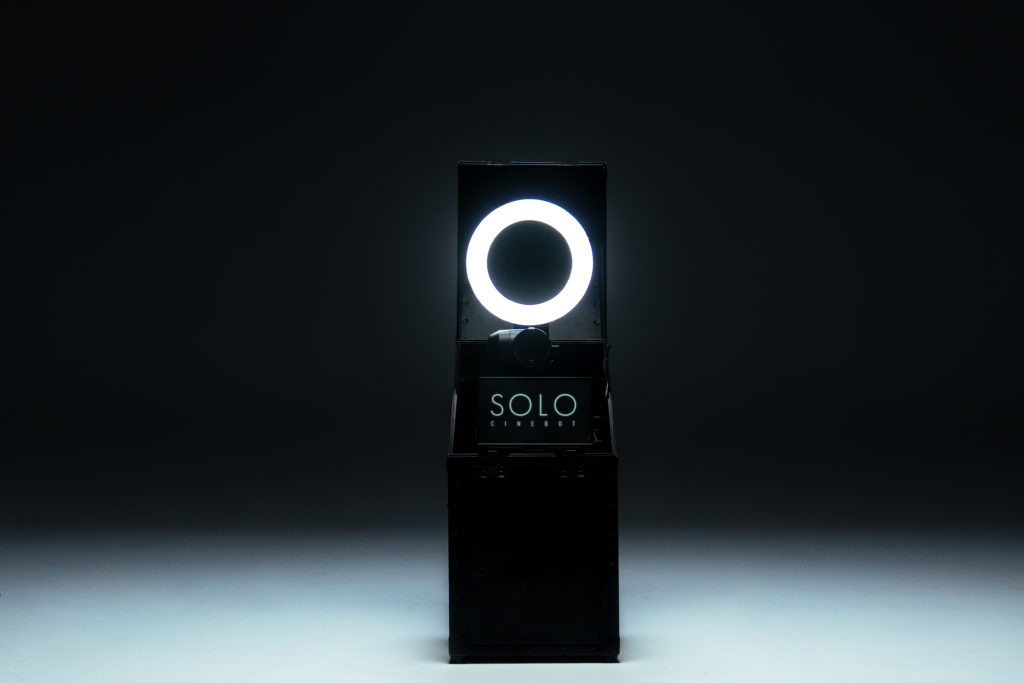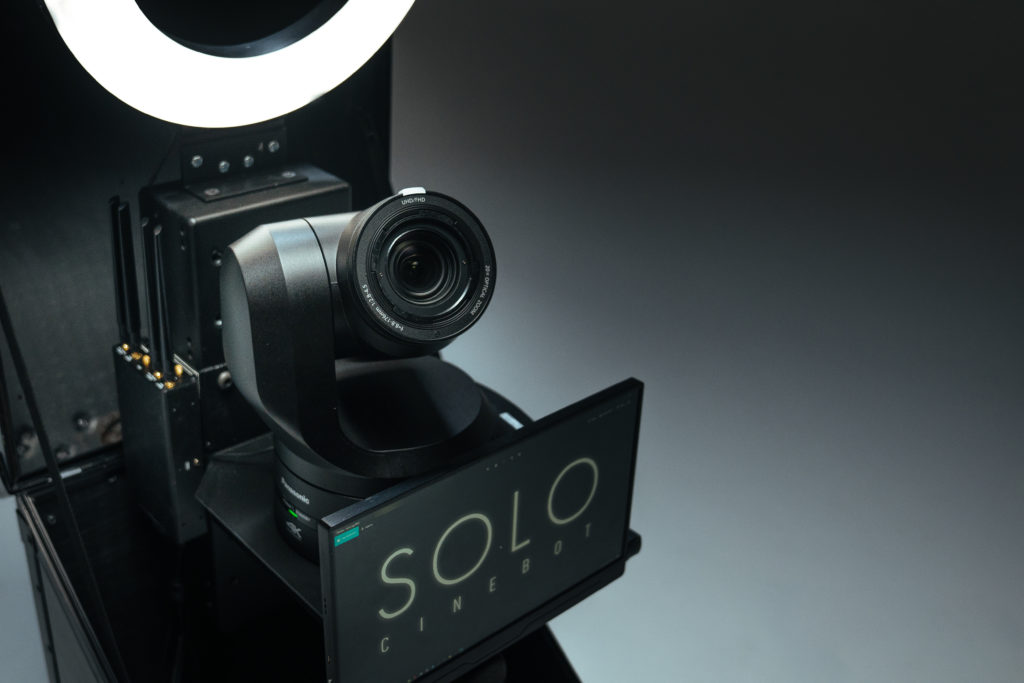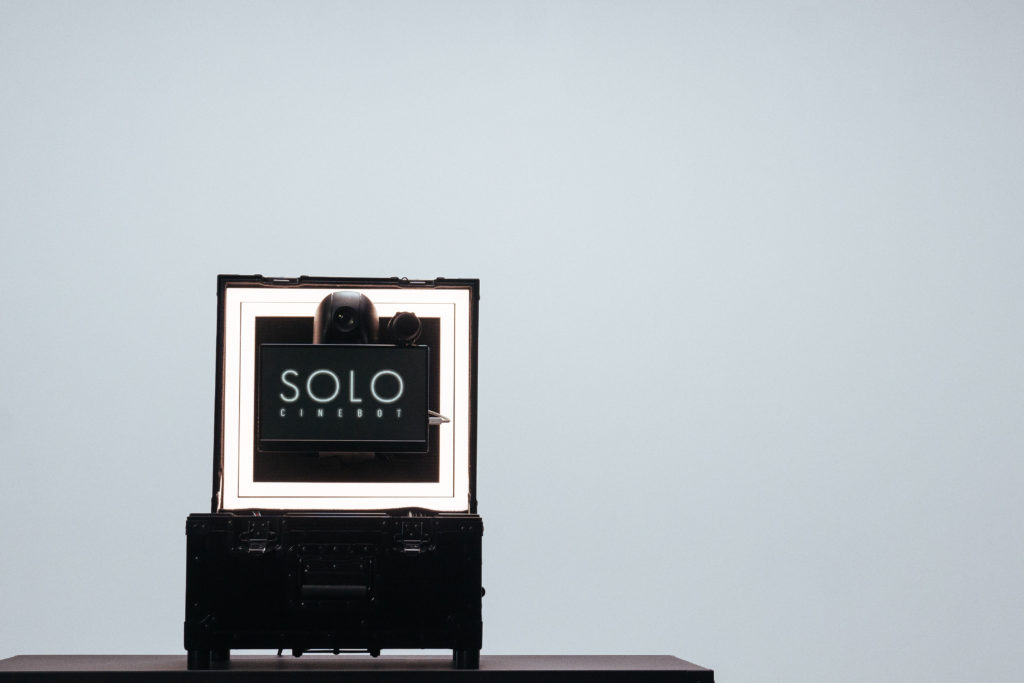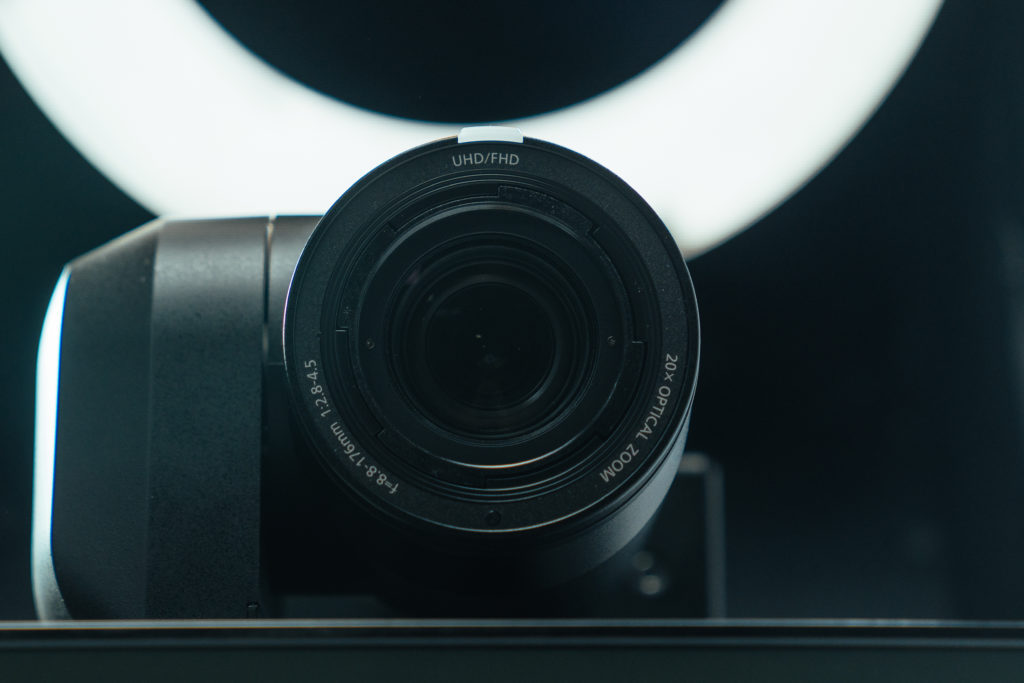August 26, 2020
5 min read
SOLO Cinebot was created by LA-based cinematographer Aaron Grasso and Executive Producer Josh Shadid during the COVID-19 pandemic to solve a huge problem. How do you film when you can’t be in the same place at once?
When the pandemic hit, Grasso and Shadid did their best to stay busy. Grasso, who also owns Antagonist Camera, found himself with a big empty shop full of camera equipment with amazing wireless technology. He realized it wouldn’t be a stretch to create a camera system that could be operated entirely remotely. Shadid, who runs production company Lord Danger, had multiple projects on hold, but had a client who had access to celebrities who needed to capture content. “I told him, under my breath, that I had was working on a remote camera system,” explains Shadid. “You just send it out and it works. He was like, ‘Oh my God, that's exactly what we need’ and immediately put me on a phone call with 15 people at a major tech company. After I hung up the phone, I called Aaron immediately and said, ‘I don't know how to do this but clearly there's a need and how can we do this?’”
Since Grasso and Shadid both work in production, they know what a working set looks like. Production crews were no longer able to be on set, but they needed to create a professional production solution that consisted of a 4K cinema camera, high-quality studio lighting with 12- to 18-channels of isolated uncompressed audio. They had their work cut out for them.
Creating A Solution
They also wanted their production system to be simple to use in which talent could walk into a room and everything would be ready to start shooting. “We can't send this thing to Beyonce because she's not going to do all the setup work,” explains Shadid. “The whole time I was like, ‘It's got to be one button.’ Aaron, on the other side, was like, ‘But I have to have all of the control that I would have on set, or it's not going to be good enough.’ (They eventually got the system down to no buttons.)

The SOLO Cinebot was created to solve a huge problem during COVID-19. How do you film when you can’t be in the same place at once?
“It also had to have streaming capabilities and real time communications, as well as functionalities packed in that could be controlled entirely by a remote team, requiring nothing from talent except plugging it in,” explains Grasso. “Whatever we did had to be held to a standard that could essentially go toe-to-toe with any cinema production.”
The first iteration of their solution was a DSLR in a pelican case with Philips Hue strand lights that they could control remotely. Grasso was able to control the camera’s focus remotely but couldn’t change the camera angle remotely if he had too much headroom. “A fixed focal length and a fixed camera position where you have no control over the frame to me was absolutely unacceptable,” says Grasso.
Enter The AW-UE150
When robotic PTZ cameras were brought up to him, at first Grasso dismissed them as conference or security cameras. After doing some internet research, he discovered the AW-UE150. The flagship Panasonic Pro PTZ camera, the UE150 can record UHD (3840x2160) to a 1” MOS sensor, contains a 20x optical zoom lens, and has the ability to capture in V-Log, which captures more dynamic range with an expanded color gamut similar to the VariCam LT or AU-EVA1.

The AW-UE150 can record UHD (3840x2160) to a 1” MOS sensor, contains a 20x optical zoom lens, and has the ability to capture in V-Log.
After receiving a demo unit, Grasso was immediately impressed with the image quality straight from the camera. “This is not a security camera,” he says. “This is a really nice cinema-like camera with nice optics. There are obviously other competitors with similar specs but the ability to have V-Log was a no brainer for us. We put the UE150 up against everything we could find and it surpassed the competition.”
Currently, Grasso and Shadid have put together two kits – the SOLO Cinebot XT and the SOLO Cinebot LT. The XT contains the AW-UE150, full height (33” to 72”), pan, tilt and zoom control, an LED studio ring light with brightness and bi-color control and a shotgun mic with complete audio mixing capabilities (18-channels of independent audio). The LT is a tabletop HD kit that contains a AW-UE70 PTZ camera that captures UHD, contains a 1/2.3” Type MOS sensor, an LED studio ring light with bi-color and brightness control and a shotgun mic with complete audio mixing capabilities (12-channels of independent audio).

The SOLO Cinebot XT is a smaller and lighter tabletop HD kit that contains a AW-UE70 PTZ camera.
“Obviously the XT is geared towards cinema production’s highest standards,” says Grasso. “The LT was designed for people who wanted to have a significantly better image than what they are getting from Zoom calls. They also want to have the same perks of essentially zero setup for talent, lighting control, camera control, great image, good audio, and real time communications - all in a package that is smaller and cheaper.”
SOLO Cinebot Pre- & Post-COVID
Since its recent launch, there has been significant buzz and activity around the SOLO Cinebot, which already has shot projects for major studios, tech companies and brands all over the world. Once the pandemic is over and people slowly start returning to set, Shadid believes there will be significant changes to film production and the SOLO Cinebot will have a permanent place in all types of production.

According to SOLO Cinebot co-founder and cinematographer Aaron Grasso, they put the UE150 up against everything they could find and it surpassed the competition.
“Celebrities go out and they'll shoot their Oscar film, but they might not be into the idea of flying around the world doing roundtables, or 1-on-1 interviews,” says Shadid. “Also, let’s be honest, no celebrity, or CEO, really wants a film crew in their house. And if the crew can work remotely from somewhere else, and there is low impact solution where they don't have to leave and nobody has to come in. I think there is a place for that moving forward.”
For more info on SOLO Cinebot, click through here.
For more info on the AW-UE150, visit here.
![]()
